Island and resort area, covering 4.35 square miles in land area located in Lake Huron between Michigan's Upper and Lower Peninsulas
General Information
How to Get There
Overview
Mackinac Island is an island and resort area, covering 4.35 square miles (11.3 km2) in land area, in Michigan. The name of the island in Odawa is Michilimackinac and "Mitchimakinak" (Ojibwe: mishimikinaak) in Ojibwe meaning "Big Turtle". It is located in Lake Huron, at the eastern end of the Straits of Mackinac, between the state's Upper and Lower Peninsulas. The island was long home to an Odawa settlement and previous indigenous cultures before European colonization began in the 17th century. It was a strategic center of the fur trade around the Great Lakes. Based on a former trading post, Fort Mackinac was constructed on the island by the British during the American Revolutionary War. It was the site of two battles during the War of 1812 before the northern border was settled and the US gained this island in its territory.
In the late 19th century, Mackinac Island became a popular tourist attraction and summer colony. Many of the structures on the island have undergone extensive historical preservation and restoration. Because of its historic significance, the entire island is listed as a National Historic Landmark. It is well known for numerous cultural events; a wide variety of architectural styles, including the Victorian Grand Hotel; and its ban on almost all motor vehicles. More than 80 percent of the island is preserved as Mackinac Island State Park.
Mackinac Island is about 8 miles (13 km) in circumference and 4.35 square miles (11.3 km2)[disputed - discuss] in total area. The highest point of the island is the historic Fort Holmes (originally called Fort George by the British before 1815), which is 320 feet (98 m) above lake level and 890 feet (271 m) above sea level.
The island can be reached by private boat, by ferry, by small aircraft and, in the winter, by snowmobile over an ice bridge. The airport has a 3,500-foot (1,070 m) paved runway, and daily charter air service from the mainland is available. In the summer tourist season, ferry service is available from Shepler's Ferry and Star Line Ferry to shuttle visitors to the island from St. Ignace and Mackinaw City.
Motorized vehicles have been prohibited on the island since 1898, with the exception of city emergency vehicles (ambulance, police cars and fire trucks), city service vehicles and snowmobiles during winter. Travel on the island is either by foot, bicycle, horse or horse-drawn carriage. Roller skates and roller blades are also allowed, except in the downtown area. Bicycles, roller skates/roller blades, carriages, and saddle horses are available for rent.
An 8-mile (13 km) road follows the island's perimeter, and numerous roads, trails and paths cover the interior. M-185, the United States' only state highway without motorized vehicles, makes a circular loop around the island, closely hugging the shoreline.
Mackinac Island State Park covers approximately 80 percent of the area of the island and includes Fort Mackinac, as well as portions of the island's historic downtown and harbor. No camping is allowed on the island, but numerous hotels and bed and breakfasts are available.
The downtown streets are lined with many retail stores and restaurants.
Most of the buildings on Mackinac Island are built of wood, a few are of stone, and most have clapboard siding. The architectural styles on the island span 300 years, from the earliest Native American structures to the European-American styles of the 19th century.
The earliest structures were built by the Anishinaabe and Ojibwe (also called Chippewa in the United States) tribes before European exploration. At least two buildings still exist from the original French settlement of the late 18th century. Mackinac Island has the only example of northern French rustic architecture in the United States, and one of few survivors in North America.
Mackinac Island also contains examples of Federalist, Colonial, and Greek Revival styles. Given its rise as a tourist destination in the late nineteenth century, many of the island's structures were built in the later style of the Victorian era, which includes Gothic Revival, Stick style, Italianate, Second Empire, Richardson Romanesque and Queen Anne styles. The most recent architectural styles date from the late 19th century to the 1930s and include the Colonial and Tudor revival.
All of Mackinac Island was listed as a National Historic Landmark in October 1960. In addition, because of the island's long history and preservation efforts starting in the 1890s, eight separate locations on the island, and a ninth site on adjacent Round Island, are listed in the United States National Register of Historic Places.
The entire island, Haldimand Bay, and a small shipwreck form a historic district.
Built by the British in 1780, Fort Mackinac was closed as a fort by the United States in 1895 as it no longer had any strategic purpose. It has been restored to its late 19th-century state through efforts beginning in the 1930s.
The Biddle House, one of the oldest structures on Mackinac Island, was built about 1780 and is interpreted in its role as a prosperous home for the Métis Biddle family during the height of the fur trade in the 1820s.
The McGulpin House, a working-class home possibly constructed prior to 1780, is interpreted as a frontier working-class home.
The Agency House of the American Fur Company was built in 1820 as the residence for the company's Mackinac Island agent, Robert Stuart. It has been adapted as a fur trade museum and is open to the public.
The Mission House was built on Mission Point in 1825 by Presbyterian missionary William Montague Ferry as a boarding school for Native American and Métis children. It became a hotel in 1849 and a rooming house in 1939. It is restored and now houses State Park employees.
The 108-foot tall glassed-in Mission Point historical museum has five floors of historical exhibits and views of the Mackinac Straits. Exhibits include the maritime history of Mackinac Island, Great Lakes lighthouses, shipping, and shipwrecks, Mackinac Bridge construction, and the film Somewhere in Time, which was primarily filmed on Mission Point property.
The Mission Church was built in 1829 and is the oldest surviving church building in Michigan. It has been restored to its 1830s appearance.
The Indian Dormitory was constructed under direction of U.S. Indian agent Henry Rowe Schoolcraft after the US and area tribes signed the 1836 Treaty of Washington. It operated as a school and a place for Native Americans to stay while coming to the island to receive yearly annuities. The building was restored in 1966 and converted to a museum; it closed in 2003. On July 2, 2010, the building was reopened for use as The Richard and Jane Manoogian Mackinac Art Museum. It showcases Mackinac art from prehistory to the present, and includes a children's art studio.
The Matthew Geary House, built in 1846 as a private residence, was added to the NRHP in 1971. Privately owned, it is available for lease for vacation rentals.
The current Catholic Sainte Anne Church was built from 1874. It replaced earlier parish churches in use on Mackinac Island and the adjacent mainland; the parish register records participants in sacraments such as baptisms, marriages, and funerals from 1695.
The Grand Hotel is a Victorian-style structure that opened in 1887. The 1980 film Somewhere in Time was shot on location at the hotel.
The Round Island Lighthouse is located just south of Mackinac Island on the small, uninhabited Round Island, which is held and operated by the US Forest Service. The light was built in 1894 and automated in 1924. Extensive restoration began in the 1970s, and the exterior and structure have since been repaired.
Wawashkamo Golf Club was laid out in 1898 as a Scottish links-type course. It is the oldest continuously played golf course in Michigan.
The Michigan Governor's Summer Residence was built overlooking the harbor in 1902. It was purchased by the state in 1943 for use as a seasonal governor's residence.
Anne's Tablet is an Art Nouveau sculptural installation added to a blufftop overlook in 1916.
This article uses material from the Wikipedia article "Mackinac Island", which is released under the Creative Commons Attribution-Share-Alike License 3.0
Featured Locations and Trails
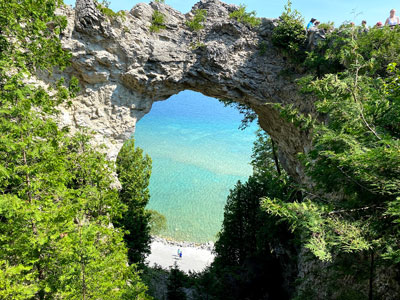
Andy Gnias, CC BY-SA 4.0, via Wikimedia Commons; Image Size Adjusted
Arch Rock
Natural limestone arch on Mackinac Island
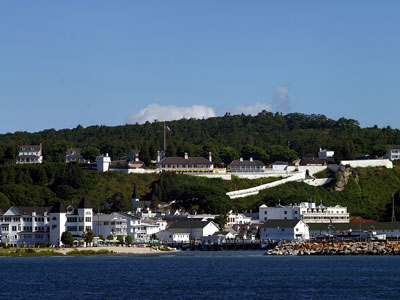
Drdpw, CC BY-SA 3.0, via Wikimedia Commons; Image Size Adjusted
Fort Mackinac
Former British and American military outpost garrisoned from the late 18th century to the late 19th century on Mackinac Island
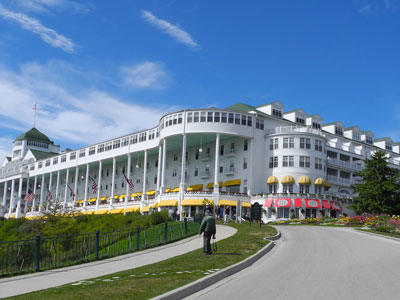
Hdeon1, CC BY-SA 4.0, via Wikimedia Commons; Image Size Adjusted
Grand Hotel
Historic hotel and coastal resort on Mackinac Island and constructed in the late 19th century, the facility advertises itself as having the world's largest porch
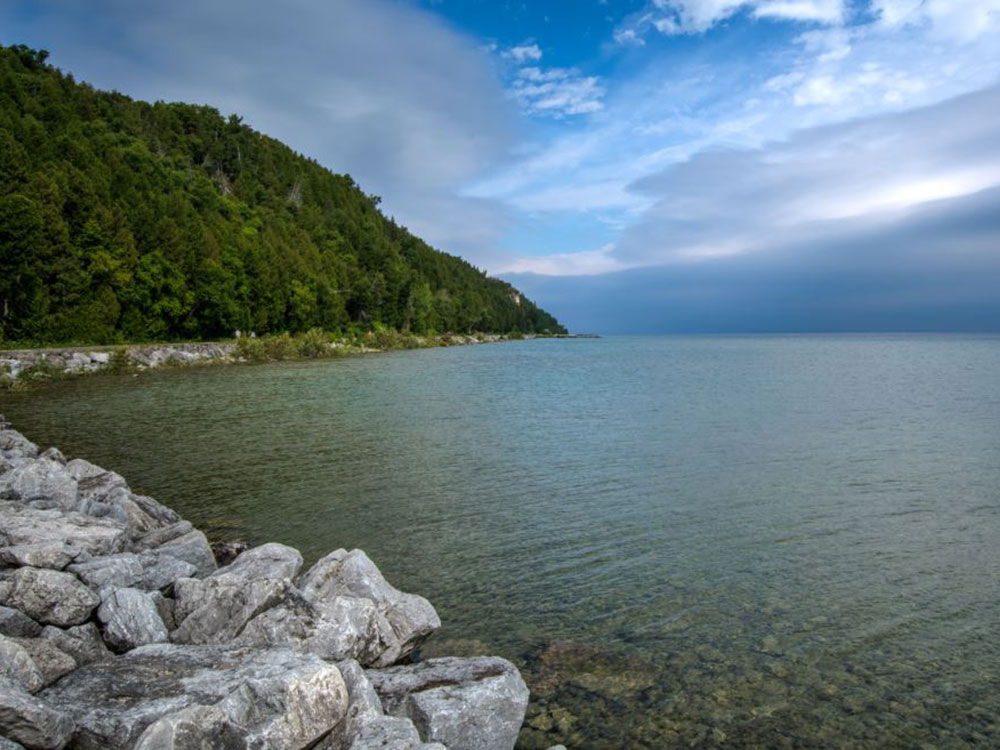
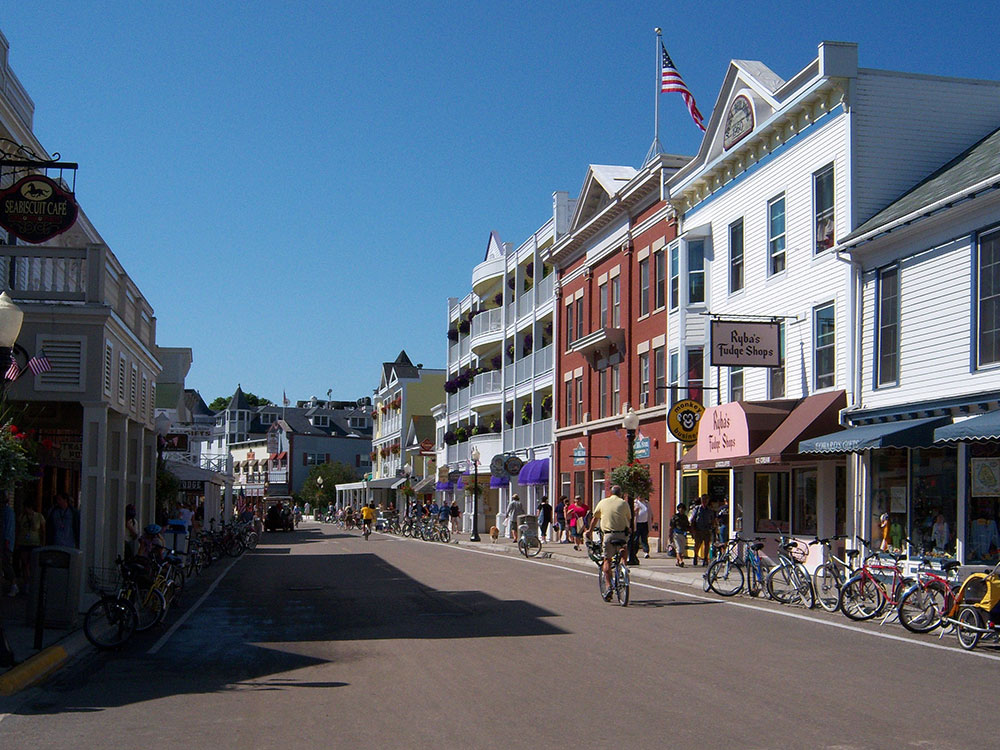
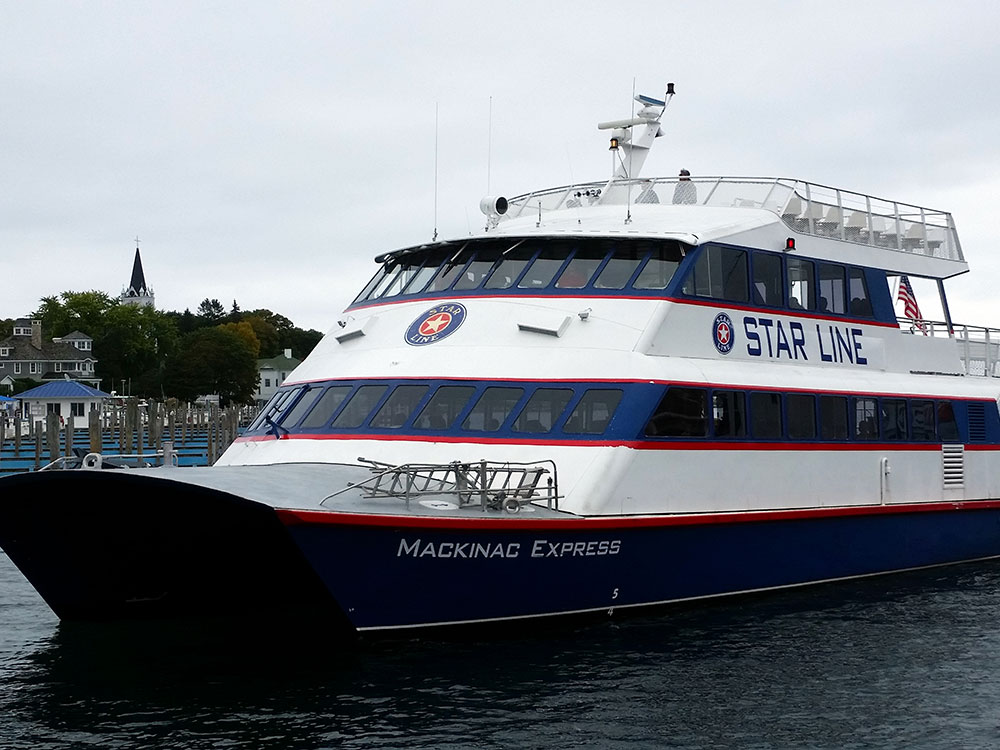
-1000.jpg)